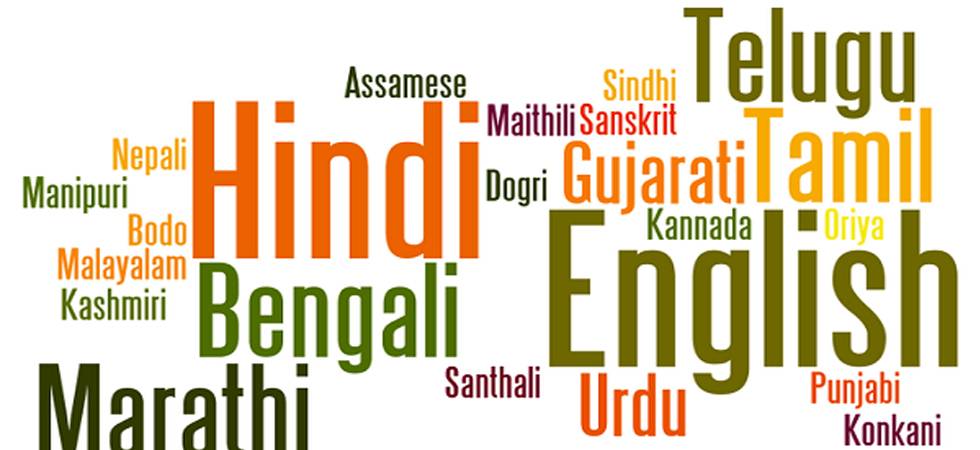In India, several languages are spoken due to its diverse culture and rich linguistic heritage. The Constitution of India recognizes 22 languages as scheduled languages, which means they are given special status and are used for official purposes. Additionally, there are numerous other regional and tribal languages spoken across the country. Some of the major languages spoken in India include:
Hindi: Hindi is the most widely spoken language in India and serves as the official language of the central government. It is predominantly spoken in the northern and central regions of the country.
English: While not native to India, English is extensively used as an associate official language for communication at the national level and is commonly used for business, education, and administration.
Bengali: Predominantly spoken in the state of West Bengal and the union territory of Andaman and Nicobar Islands, Bengali is the second most spoken language in India.
Telugu: Telugu is primarily spoken in the states of Andhra Pradesh and Telangana in the southern part of India.
Marathi: Marathi is spoken in the state of Maharashtra and is the official language of the state government.
Tamil: Tamil is the official language of the state of Tamil Nadu and is also spoken in the union territory of Puducherry.
Urdu: Urdu is commonly spoken in various parts of India and serves as the second official language in the state of Jammu and Kashmir.
Gujarati: Gujarati is spoken in the state of Gujarat and some parts of the neighboring states.
Kannada: Kannada is the official language of Karnataka state in southern India.
Punjabi: Predominantly spoken in the state of Punjab, Punjabi is also spoken in some other northern states.
Malayalam: Malayalam is the official language of the state of Kerala in the southern part of India.
Odia (Oriya): Odia is spoken in the state of Odisha on the eastern coast of India.
Assamese: Assamese is spoken in the state of Assam in northeastern India.
Maithili: Maithili is spoken mainly in the state of Bihar.
Santali: Santali is predominantly spoken in the states of Jharkhand, West Bengal, and Odisha.
These are just a few examples, and there are many more languages with millions of speakers across India.
"Linguistic Diversity: The Rich Tapestry of Languages in India"
India, a land of vibrant culture and ancient heritage, boasts an unparalleled linguistic diversity that sets it apart from most other countries in the world. With a plethora of languages spoken across its vast expanse, India is a true melting pot of linguistic traditions, each adding a unique flavor to the country's rich tapestry.
At the heart of this linguistic mosaic is Hindi, the most widely spoken language in India. Serving as the official language of the central government, Hindi bridges the communication gap between people from different regions and backgrounds. However, it is crucial to recognize that India's linguistic landscape extends far beyond Hindi.
In total, there are 22 scheduled languages officially recognized in the Indian Constitution. These scheduled languages enjoy special status and are used for official purposes in various states and union territories. Among them, Bengali, Telugu, Marathi, Tamil, Urdu, Gujarati, Kannada, Punjabi, Malayalam, Odia, Assamese, Maithili, Santali, and many others hold prominent positions as the primary languages of various states.
The linguistic diversity of India finds its roots in centuries of historical and cultural interactions. As each region developed its unique identity, languages evolved, and linguistic boundaries were established. This treasure trove of languages has been meticulously preserved by the people, passing down their linguistic heritage from generation to generation.
English also plays a significant role in India's linguistic landscape. While not native to the country, English's historical presence during the colonial era has left a lasting impact. Today, English serves as an associate official language, facilitating communication at the national level and acting as the language of choice for business, education, and administration.
The regional languages of India not only define its cultural identity but also reflect the incredible linguistic prowess of its people. From the lyrical beauty of Bengali to the poetic charm of Urdu, and from the rhythmic flow of Malayalam to the enchanting cadence of Tamil, each language carries the weight of a rich literary tradition.
India's linguistic diversity is not without its challenges, though. Preserving and promoting endangered languages is a pressing concern, as globalization and urbanization pose a threat to the continued use of some languages. The need to strike a balance between embracing modernity and preserving heritage is an ongoing endeavor.
The Indian government, in collaboration with linguistic experts and cultural organizations, has been taking proactive steps to safeguard endangered languages and promote multilingual education. Efforts are being made to document and digitize indigenous languages, ensuring their survival in the digital age.
Language is an integral part of one's identity, and India's linguistic diversity is a testament to the country's rich cultural heritage. Embracing and celebrating this vast array of languages will not only strengthen the bonds of unity among the Indian populace but also showcase India's unique place in the world.
In conclusion, India's linguistic diversity is a source of pride and awe, uniting its people through a shared sense of cultural belonging. As we move forward in a rapidly globalizing world, cherishing and preserving this linguistic treasure trove will remain essential in safeguarding India's vibrant cultural tapestry for generations to come.
-min.png)



thanks for your feedback